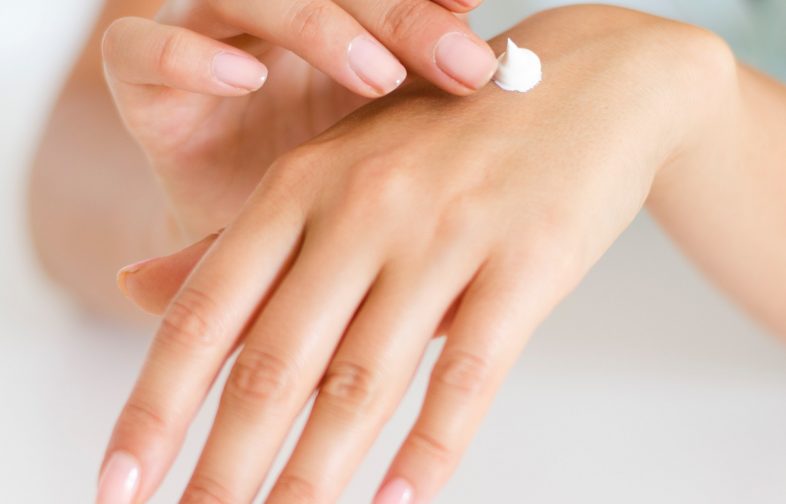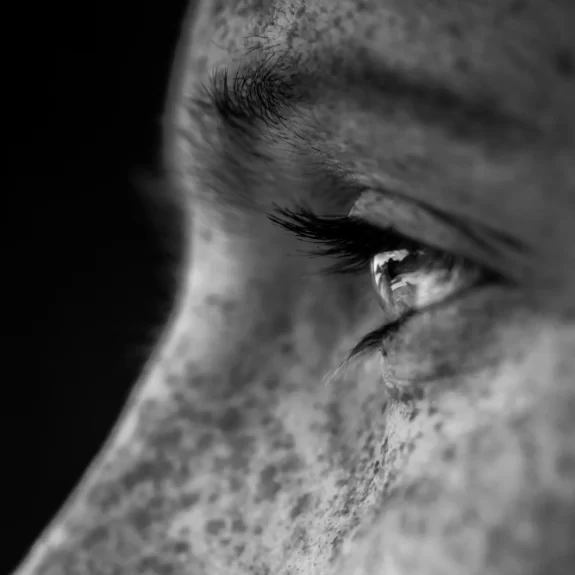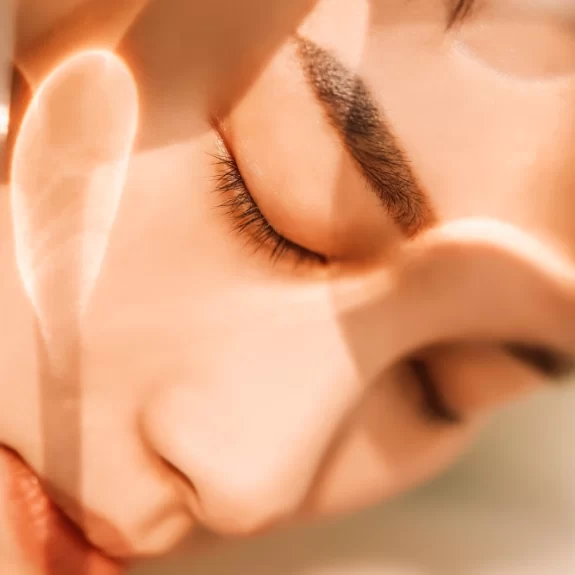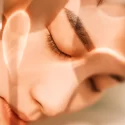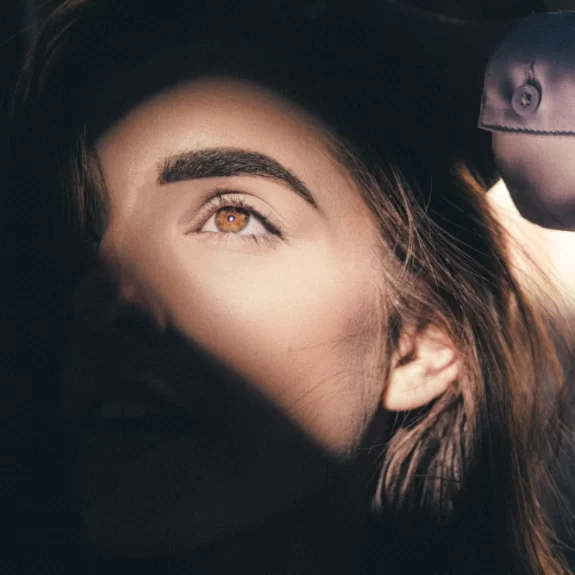Although there are hundreds of conditions which can affect the skin, a couple tend to crop up time and again with people looking to improve their complexion.
From fine lines and wrinkles to hyperpigmentation and acne, here are five common skin concerns and how they are treated.
Hyperpigmentation
Hyperpigmentation is a condition which sees some patches of skin become darker than others. Technically it’s caused by excess melanin production and can be the result of sun damage, acne scarring or even hormone fluctuations.
The latter is why pregnant women often experience hyperpigmentation; referred to as melasma, but the fact is it can also affect you at any time of life.
Hyperpigmentation is very common, the good news being that it is treatable. It can also be mitigated with a little extra diligence like sun protection and avoidance.
Hyperpigmentation is addressed in a host of different ways, ranging from topical lightening creams to professional chemical peels, LED Light Therapy and microdermabrasion in a clinical setting.
The important thing to note is that hyperpigmentation treatment should be tailored to your skin type and tone, topical treatments tend to take longer to achieve results, and the best outcomes might require multiple in-clinic treatment sessions.
Acne
Contrary to popular belief, acne isn’t just something that affects people in their teens, but for many the teen years are the first time they encounter the problem.
In fact, about 15 per cent of adult women still experience acne, and its causes range from hormone imbalance, stress to clogged pores as a result of slower dead skin cell turnover as we age which causes bacteria to become trapped resulting in painful cysts.
The medical term used is Acne Vulgaris and symptoms range from blackheads to whiteheads with some people suffering from more severe symptoms which include raised nodules, papules, pustules and cysts that leave your skin more prone to scarring.
Mild acne can be treated with a diligent but gentle skincare regimen as well as professional treatments harnessing the healing powers of LED Light Therapy to target the superficial P. Acne Bacteria thought to be a major cause of acne, while using prescribed creams specifically targeted to restore a healthy skin barrier free of acne.
More severe or recurrent acne can also benefit from professional treatments including enzyme and chemical peels which both assist with gently resurfacing the top layer of skin ensuring pores are clean and free from bacteria.
Wrinkles and fine lines
Fine lines and wrinkles are part of the aging process as the skin responds to conditions like sun exposure, stress, smoking, lifestyle, fatigue, and dehydration. Fine lines tend to be the first indicator of this and usually appear when people reach their 30s. They’re most commonly seen around the eyes and in areas of the face which make the most expression.
Later these lines turn into wrinkles as the collagen and elastin beneath your skin begins to break down.
Preventing or delaying fine lines and wrinkles involves protecting your skin from environmental elements like sun exposure causing UV damage, which makes UV protection a must.
A good skincare routine including moisturising and hydrating ingredients such as Hyaluronic acid can also assist; as does the regular consumption of water to keep the all organs; including skin internally hydrated. Meanwhile eliminating negative lifestyle habits like smoking and excess alcohol consumption can also help you avoid premature fine lines and wrinkles.
Once these fine lines and wrinkles begin to make their appearance, clinical treatments such as microdermabrasion, chemical peels and laser resurfacing are the common treatments.
Each removes the upper layer of the skin and can help stimulate muscle tone and collagen production to reveal a more youthful appearance.
Rosacea
Estimated to affect between one and 10 per cent of people, rosacea is a long-term skin condition typically characterised by red areas, pimples, swelling and superficial dilated blood vessels on the face. Rosacea has 4 subtypes:
- Erythematotelangiectatic rosacea
Redness, flushing, visible blood vessels - Papulopustular rosacea
Redness, swelling, and acne-like breakouts - Phymatous rosacea
Skin thickens and has a bumpy texture - Ocular rosacea Eyes red and irritated, eyelids can be swollen, and the person may have what looks like a sty
It most commonly affects the cheeks, forehead and nose, and its cause is not fully understood.
What is recognized, is that rosacea tends to be exacerbated by certain triggers including sun exposure, stress, spicy foods and alcohol. Identifying what triggers a flare up is important for the management of the condition. Whilst there is no known cure for sufferers of rosacea, treatments focus on reducing the symptoms and preventing the condition from worsening. Treatment options include Light therapy, along with mild skincare products free of all known skin irritants aiming to restore the integrity of the skin barrier.
Eczema
If you’ve ever suffered facial eczema, you’ll appreciate it’s a frustrating condition and a major confidence killer. Estimated to affect about 30 per cent of the population, this highly common skin condition has symptoms that range from flaky reddened skin to blistering.
There are also multiple types of eczema, with atopic dermatitis being the most common. This type of eczema tends to first rear its head in adolescence and is more prevalent in people with a family history. Facial eczema is also often linked to other allergies like peanut and seafood allergies, along with hay.
One of the hardest things when it comes to dealing with eczema is actually determining what might be inducing your flare ups. For one person, the fragrance in a product might be the cause, for another cold weather could be a trigger. And, like many other skin conditions, it tends to worsen due to stress, and sun exposure.
Treating eczema involves understanding when it’s most likely to occur and handling it accordingly. It also involves being a little more selective when it comes to the products you use on your skin, opting for cleansers, serums, creams and moisturisers that are free of fragrances and known allergens.
In terms of clinical solutions, LED Light Therapy using 830nm has yielded great results if you’re not having luck with creams or if your flare-ups are more severe.
About Kaelon
At Kaelon our philosophy stands for skin first, makeup second. We believe that skincare is the future of makeup and the two have and will always go hand in hand.
Our skin consultations are designed to assess your skin and prescribe products suitable for you. No two skins are the same, nor should they be treated as such.
We respect that everyone’s skin, lifestyle and health is different, so we create a routine bespoke to you. You can contact our dedicated customer care team or book your skincare consultation directly.
